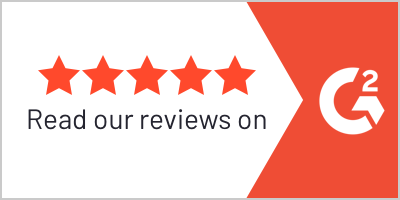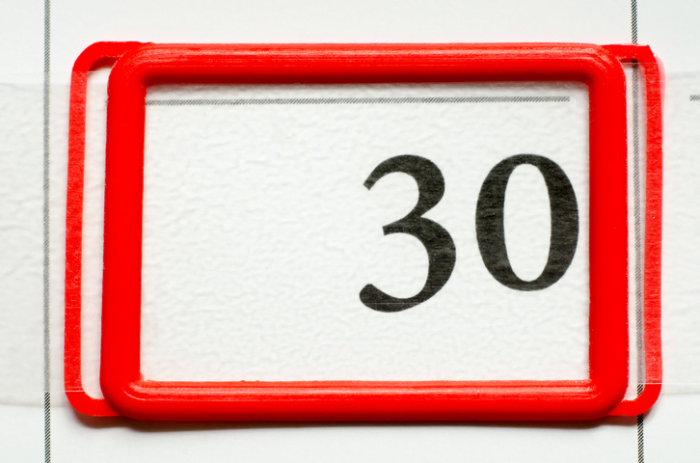If you’ve read any of my other posts, you know that I’m all about harsh truths. My experience in the sales industry has taught me that when someone or something is underperforming, excuses get tossed around like confetti in a hurricane. Sales trainers blame inside sales teams, inside sales teams blame sales trainers for poor sales training and negotiation training, sales execs blame sales trainers who blame inside sales teams who blame sales execs. And of course, everyone tries to blame marketing. And on and on and on.
Well, today’s harsh truth might put some readers off. In fact, I’ve spent months thinking about how to write it, even though when I share the idea with folks, they rarely disagree. So while I may not articulate this perfectly, it’s time to stop wondering and start writing.
While we all know the best day to buy a Saas product is on the last day of the month or quarter. What we fail to discuss, is why is this? And why does nobody talk about it? We need to discuss this. We must discuss it and its time to come out of the shadows about this topic. In fact, it turns out that both questions may have the same answer.
It’s easier to negotiate good prices with Saas salespeople on the last day of the month, and even easier on the last day of the quarter because organizations are desperate. They are desperate to get their numbers up to hit their goal, save face for a shitty quarter and of course before the next board meeting. And when companies act desperately, they make their salespeople conduct insane acts of desperation. And the buyer knows it.
The sales team won’t push as hard. They’ll concede easier. They’ll neglect to remind the prospect of the product’s real value, glossing over exactly what the prospect is paying for and how it makes sense mathematically. They’ll lose their backbone, and while they may close the deal, the “win” becomes associated with something negative. We’re happy for the win, and yet we maintain a seller’s guilt like we’re wearing a cheap suit. And so we don’t think about it. We move on and pretend like nothing happened. We say, “No worries, we’ll do better the next time.”
And when it becomes clear that the business is missing revenue targets toward the end of the sales period, sales leaders tend to blame the reps. But as is the case with dogs, the problems have less to do with the reps and more to do with how they were trained. Not that salespeople are dogs. For Christ’s sake, I’m a sales consultant, not an analogy factory.
So, when you notice a spike in bad deals toward the end of the month or quarter, take a step back and reevaluate your sales negotiation training and coaching, then strengthen it for future reps.
Need a good starting place? Here are some common negotiation mistakes, and how to fix them.
Waiting too long to bring up competitors
If you wait until the pricing discussion to bring up your competitors, you’ve already lost. All too often, sales teams intentionally avoid conversations about competitors out of fear that bringing up a competitor will derail the deal. Then, when the prospect brings up the competition, the salesperson is suddenly a deer in headlines. We freeze. A slight panic creeps in. Our stomach churns and the first word out of our mouth is… “Uhhhh…”
Instead, address the competition before the prospect does. If you get out ahead of it, you can control the way it’s discussed through pace, tone, and confidence.
Try mentioning the competition early in the #salesqualification process, perhaps just before you schedule the demo. Knowing what else the prospect is looking at will help you determine which product strengths will most effectively counter the competition’s. Then highlight those strengths.
It’s also important to be subtle. Instead of saying something like, “So have you spoken with X?” try asking, “What else are you seeing in the marketplace?” or “What features specifically matter to you as you look for a solution?”
One last thought about managing the competition: Take nothing at face value. It’s like playing blackjack. No matter what the dealer (prospect) shows face up, always assume there is a 10 underneath. The same goes for sales. We should always assume the prospect already knows about the competitor or will find out eventually. So don’t ignore it. Remember, hope and prayer is not a strong #salesstrategy.
Caving to the “we got burned” plea
Tell me if you’ve heard this one. You’re having a good conversation with a prospect. They seem interested. Their needs match your solutions. And then they drop this: “Hey, you know we are a bit leary to spend more money on this because we had a bad experience. Can you help me out?”
Whether they’re playing up a bad experience to garner #sympathydiscounts like a highschool kid playing up a sprained ankle to garner attention, or are expressing legitimate concern over being twice burned, caving to their sympathy grab is the wrong move. Why? Because your product should stand on its own. Giving a prospect a discount because they’ve had a bad experience with another business validates their anxiety over your own product. If you’re confident in what you’re selling, let that confidence win over the customer, not the discount.
Instead of caving, I suggest taking a very empathetic tone and explain that you understand. I often throw in a similar story to demonstrate that we’ve been in a comparable situation. Then I ask the following questions:
“I completely understand your frustration with your previous experience, but I have a question for you, and please don’t take it the wrong way. When you were dissatisfied with your previous experience, what happened when you asked them to refund your money or give you additional price breaks?”
Pause, wait and say nothing until they respond.
Regardless of their response, you are now back in control of the pricing conversation. Based on their response, politely explain, “I appreciate how your previous situation has left you a little nervous, but as we’ve discussed, we are going to deliver X, Y, and Z. Our price is based on our quality of service, and of our product, and we feel that our price is fair. In fact, I am more than happy to put you in touch with other customers to help ease your mind about working with us.”
Pause, wait and say nothing until they respond.
Then follow up with the proper closing conversation, finalize pricing, and contract redlines.
One last thing. This entire strategy is based upon the ability to walk away from the deal, or at least give a strong appearance of walking away. If you aren’t willing to walk away, then you are going to have to use The Force along with a Vulcan Mind Meld to pull this one off.
Fumbling the “How much does it cost?” question
When a prospect asks about the “cost,” “price,” or “budget,” offering them a number can snuff out any life the conversation had left. If they like the number, great. If they don’t, buh-bye.
So whenever the cost is brought up, shift the rhetoric to “commercial terms.” It sounds more upscale and implies a more fluid, give-and-take situation, rather than something finite, like price or cost. It also suggests the expectation of a negotiation, and reassures the prospect that the pricing and product features/services can be adjusted, but only on fair terms.
Not knowing when to walk away
Closing the deal has got to be the best feeling in #sales. But the second best feeling? Walking away knowing you’ve done your job right, held firm to various pricing and discounting questions, and said no to a bad deal. Because there are, in fact, BAD DEALS. And we must be smart enough to avoid them.
Remember: There are two winners in every deal. The person who closes it, and the first person who walks away on their own terms.
And the person who walks away can be the salesperson. No really, it can. That’s part of their job, and if they’re not trained properly, and don’t know how to maintain control from the first conversation to the last, then they will keep cutting those crazy deals at the end of the month and quarter.
Conclusion
I hope I didn’t ruffle any feathers, but if you confront this issue and invest in negotiation training and coaching, 2017 may just be your best selling year yet. So, what strategies do you employ to keep your sales team from doing heavy discounting at the end of the month or quarter?
If you want to strengthen your sales process, reduce your #salescycle, or make sure fewer deals go dark, contact Richard here. We can help you grow your 2017 revenue before it’s too late.







